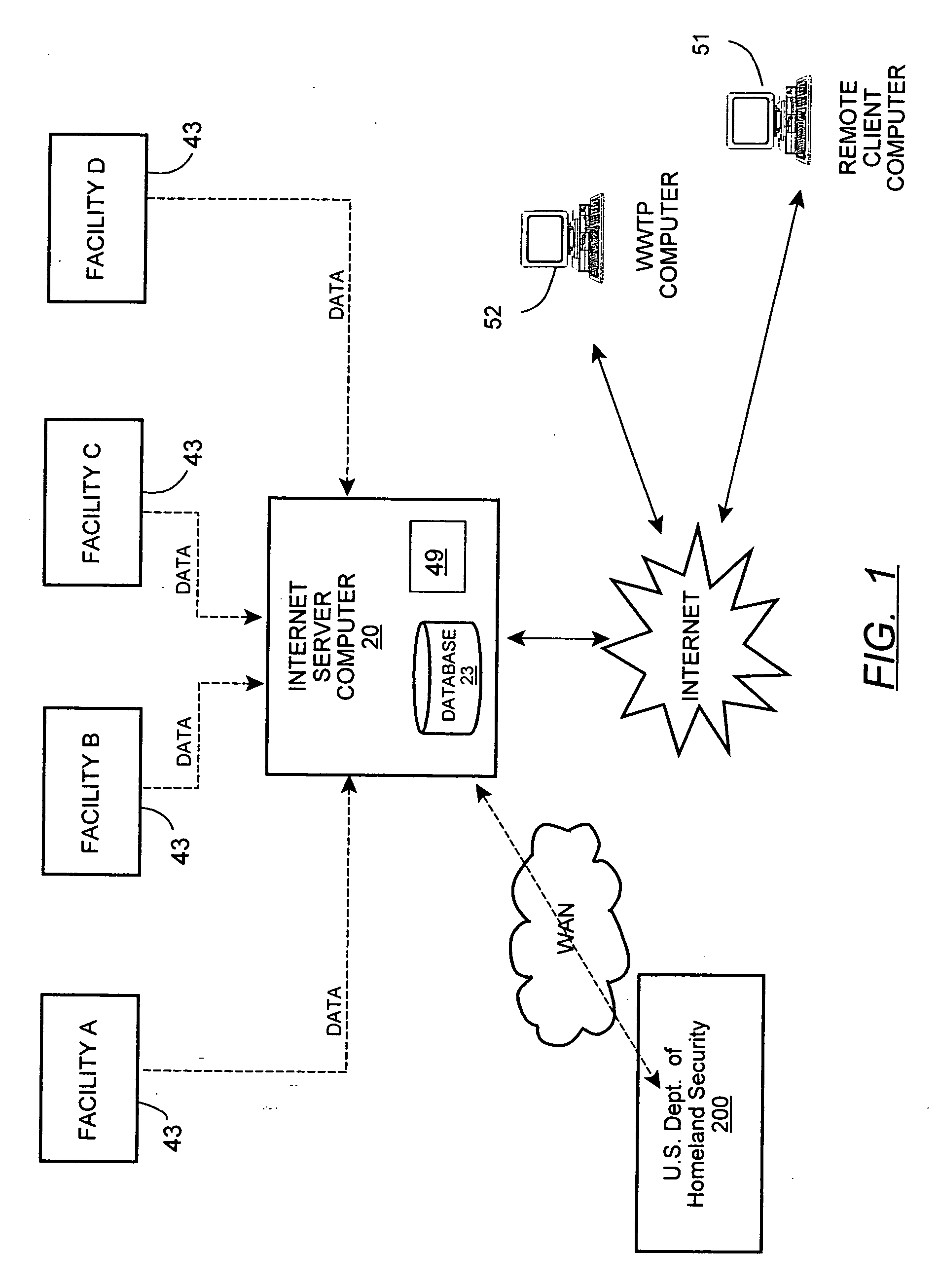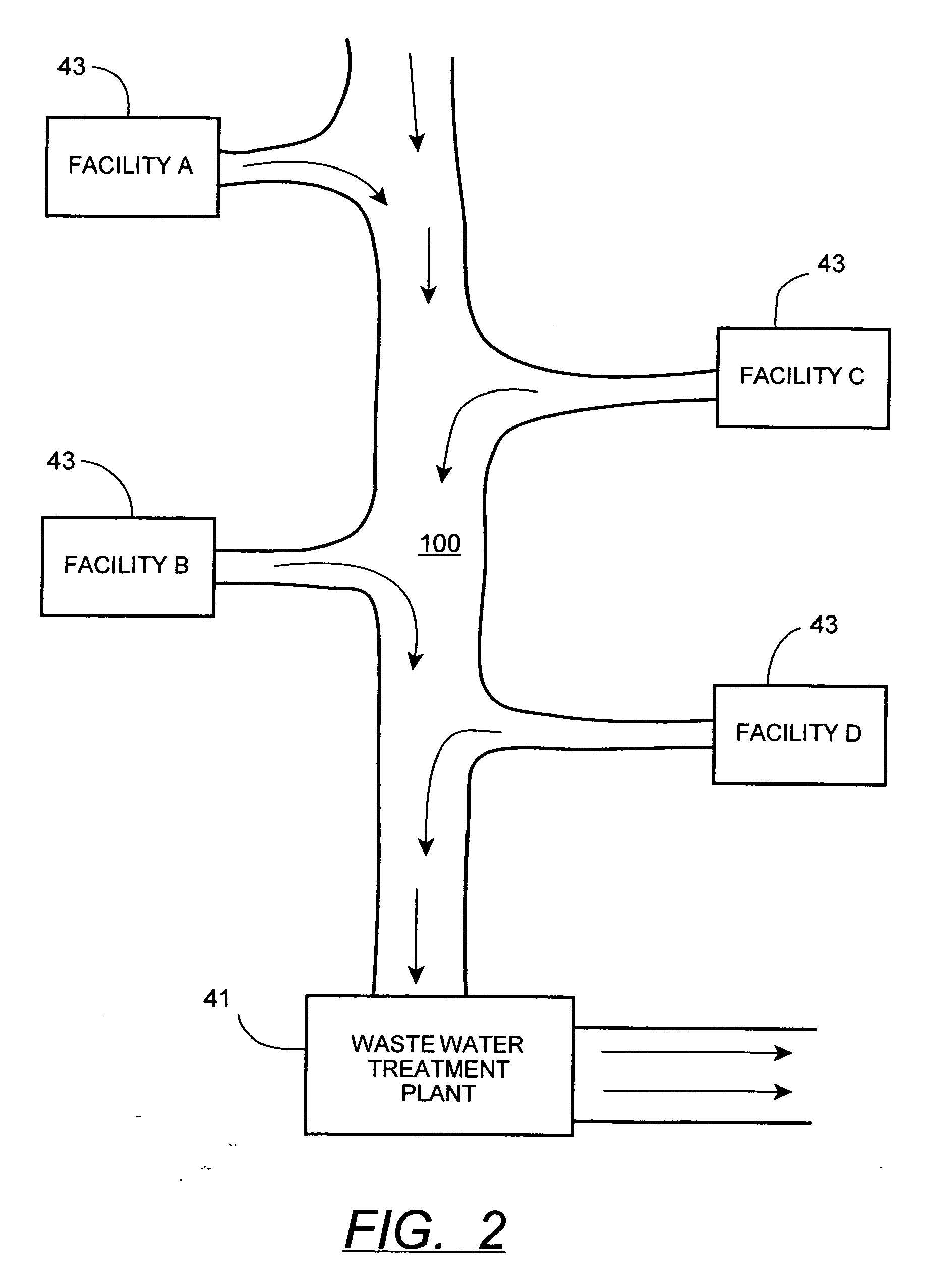System for monitoring discharges into a waste water collection system
a waste water collection and monitoring system technology, applied in separation processes, filtration separation, treatment control/steering, etc., can solve the problems of inability to effectively deal with every situation of wwtp, inability to monitor the flow rate of contaminants, and difficulty in removing effluent from wwtp
- Summary
- Abstract
- Description
- Claims
- Application Information
AI Technical Summary
Benefits of technology
Problems solved by technology
Method used
Image
Examples
Embodiment Construction
[0029] Although the invention will be described in terms of a specific embodiment, it will be readily apparent to those skilled in this art that various modifications, rearrangements, and substitutions can be made without departing from the spirit of the invention. The scope of the invention is defined by the claims appended hereto.
[0030]FIG. 1 illustrates an exemplary network configuration of the system of the instant invention according to a preferred embodiment, with the treatment facilities 43 depicted therein being associated with a central water collection system. FIG. 2 illustrates a typical waste water collection system 100 as is part of the waste water utility infrastructure. The collection system 100 serves numerous end user waste water treatment sites 43 having a central waste water treatment plant (WWTP) 41. In practice, the water treatment sites 43 can include cities, manufacturers, agricultural operations, etc. which treat waste water before it is discharged into the ...
PUM
| Property | Measurement | Unit |
|---|---|---|
| transit time | aaaaa | aaaaa |
| transit time | aaaaa | aaaaa |
| composition | aaaaa | aaaaa |
Abstract
Description
Claims
Application Information
 Login to View More
Login to View More - R&D
- Intellectual Property
- Life Sciences
- Materials
- Tech Scout
- Unparalleled Data Quality
- Higher Quality Content
- 60% Fewer Hallucinations
Browse by: Latest US Patents, China's latest patents, Technical Efficacy Thesaurus, Application Domain, Technology Topic, Popular Technical Reports.
© 2025 PatSnap. All rights reserved.Legal|Privacy policy|Modern Slavery Act Transparency Statement|Sitemap|About US| Contact US: help@patsnap.com



